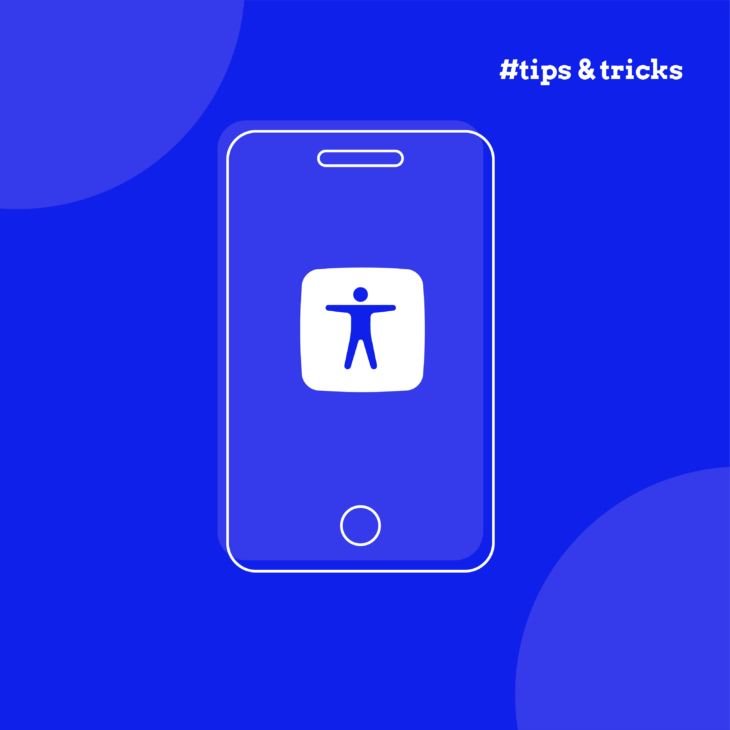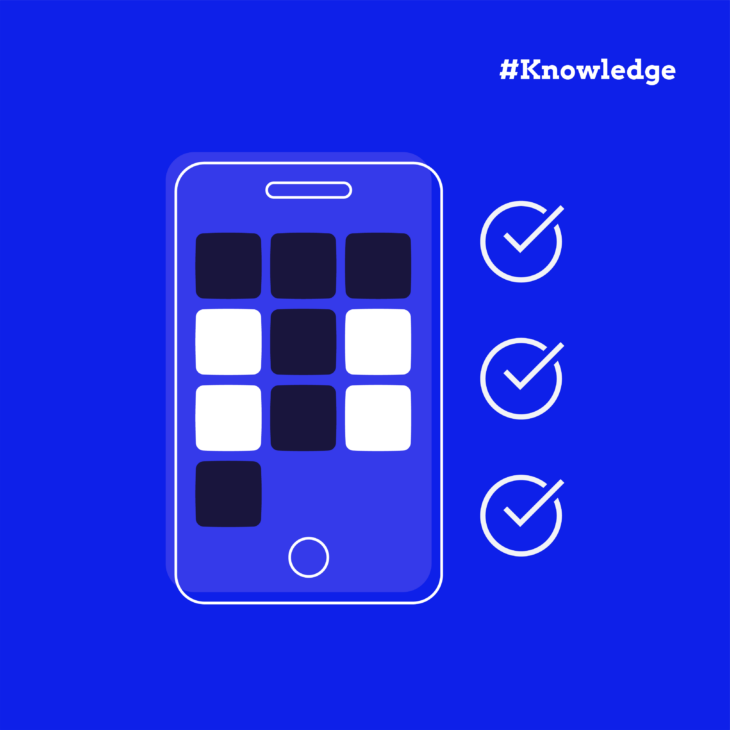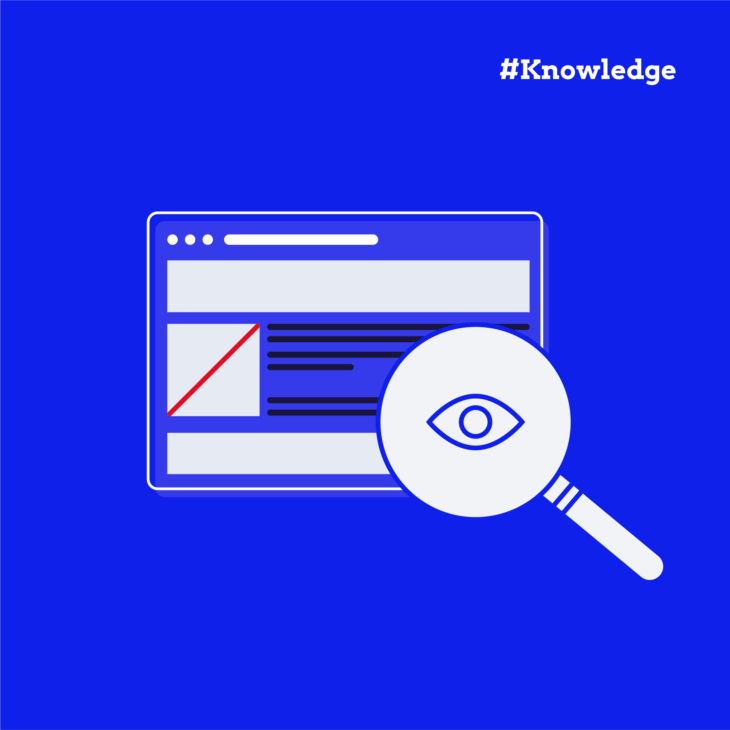Florian Schroiff has been building for the web for almost 20 years. He has worked on countless accessible websites as a freelancer and for various agencies. As a front-end expert he is always searching for ways to improve accessibility and user experience and to share them with his team — and now with you!
Making mobile apps accessible presents unique challenges that go beyond typical web accessibility concerns. Touch targets need precise sizing, gesture controls must have alternatives, and screen orientation changes require thoughtful adaptation. These mobile-specific hurdles make accessibility implementation particularly complicated.
The numbers highlight why this matters: by the end of 2020, more than four billion people were using mobile internet – 51% of the global population. For many, mobile phones are their primary – sometimes only – gateway to online services.
Creating products that work for everyone, including people with disabilities, is a noble goal. However, it’s also becoming increasingly necessary, considering how many people use their mobile as their primary electronic device. This means designing with accessibility in mind from the start, using approaches like user-centred design and universal design principles.
This guide focuses on practical solutions rather than abstract concepts. We’ll cover general mobile accessibility considerations, help you implement the newest WCAG 2.2 mobile criteria, and outline effective testing approaches.
We’ll also provide clear, actionable steps to tackle common mobile accessibility barriers, along with specific tools and techniques you can apply immediately in your development process.
Understanding mobile app accessibility
Making mobile apps accessible is a great practice, but it also makes sense from a business standpoint. Accessible apps reach more customers, improve the overall user experience, strengthen your brand reputation, and drive innovation through inclusive design thinking.
Beyond the business benefits, there are several compelling reasons why mobile apps need to be accessible:
- Legal requirements: Title III of the ADA requires digital properties, including mobile apps, to be accessible. Courts have repeatedly ruled that mobile apps fall under “places of public accommodation” in ADA cases, as seen in the landmark Domino’s Pizza lawsuit, where the company lost after a blind customer couldn’t complete a purchase using their iPhone app.
- Social justice and digital inclusion: More than 1 in 4 adults in the United States – over 70 million people – reported having a disability in 2022. Equal access to information and services isn’t optional; it’s a fundamental right.
- Diverse user needs: Accessibility benefits everyone, not just people with permanent disabilities. This includes:
- Users with permanent impairments who need specialised mobile interaction methods.
- Users in challenging environments like bright sunlight or while in moving vehicles.
- Users with temporary limitations, such as a broken arm or even holding shopping bags.
The ultimate goal is to create an inclusive and user-friendly mobile app experience for all users, regardless of their abilities or circumstances.
WCAG 2.2 mobile accessibility requirements
WCAG 2.2, published in October 2023, builds on WCAG 2.1 by improving accessibility guidance for three major groups: users with cognitive or learning disabilities, users with low vision, and users with disabilities on mobile devices. This latest update specifically addresses many mobile accessibility challenges that weren’t fully covered in earlier versions.
These include:
- Touch interfaces and complex gesture requirements that can be difficult for people with motor impairments.
- Screen size and layout issues that affect readability and navigation.
- Input and form challenges that make data entry frustrating.
- Media and content access problems when using assistive technologies.
Now, even though some of these challenges are specific to mobile apps, they still fall under the four fundamental principles of accessibility:
- Perceivable: Information must be presentable in ways all users can perceive.
- Operable: User interface components must be operable by everyone.
- Understandable: Information and interface operation must be understandable.
- Robust: Content must be robust enough to work with various assistive technologies.
These principles are broken down into specific guidelines, success criteria, and techniques that cover accommodations for people with a wide range of disabilities – blindness and low vision, deafness and hearing loss, limited movement, speech disabilities, photosensitivity, and cognitive limitations.
For mobile app developers and designers, these guidelines provide a structured framework for creating truly accessible experiences across devices and platforms.
Mobile app accessibility checklist: 7 key steps
Both Apple and Google provide comprehensive guidelines to help developers create accessible mobile experiences. Apple’s iOS Accessibility Guidelines and Human Interface Guidelines alongside Google’s Android Accessible App Guidelines serve as excellent starting points.
However, while core web accessibility principles like text alternatives, colour contrast, and flexible text sizing remain essential, mobile apps face unique challenges. So, let’s walk through the seven most important steps to make your mobile app truly accessible:
1. Core accessibility infrastructure
Apps must work perfectly with assistive technologies. This means:
- Supporting screen readers (VoiceOver for iOS and TalkBack for Android) by properly labelling all UI elements.
- Ensuring compatibility with screen magnifiers and other visual reading assistants.
- Making all functions available via text-to-speech software.
- Supporting alternative input methods like external keyboards and switches.
- Testing with alternative pointing devices like joysticks or head-tracking systems.
Without this foundation, users with disabilities simply cannot access your app’s features, regardless of how well you implement other accessibility measures.
2. Screen sizes
Mobile apps must work across a range of screen sizes and densities. Remember that:
- WCAG conformance applies to the entire screen – if content gets cut off on smaller displays, your app isn’t truly accessible.
- Text should resize without breaking layouts or hiding content.
- Critical information should remain visible when users zoom in.
- Interface elements should reflow appropriately across portrait and landscape orientations.
3. Layout consistency
Consistent navigation patterns help all users but are particularly important for people with cognitive disabilities:
- Maintain consistent navigation elements across different screens.
- Handle device orientation changes without losing context.
- Ensure dynamic content updates are announced to screen reader users.
- Preserve UI element positions across different states of your app.
- Use standard UI patterns that match platform conventions.
4. Dragging alternatives (WCAG 2.2 – SC 2.5.7)
WCAG 2.2 introduces new criteria specifically aimed at mobile interfaces. For dragging operations:
- Provide button-based alternatives to drag operations wherever possible.
- For example, if your app lets users rearrange items by dragging, also include “move up” and “move down” buttons.
- Consider tap-and-hold followed by directional movement as an alternative to continuous dragging.
- Ensure that sliders can be operated with simple taps at specific positions.
5. Target size requirements (WCAG 2.2 – SC 2.5.8)
Touch targets need to be large enough for everyone to use reliably:
- The minimum size should be 24×24 CSS pixels (about 9mm).
- Aim for 44×44 pixels (WCAG AAA success criterion and also Apple’s recommendation) when possible.
- Ensure adequate spacing between interactive elements (at least 8px).
- Pay attention to hit areas – the tappable area should extend beyond the visible button when appropriate.
Larger touch targets benefit everyone, particularly people with motor control limitations, older adults, and people using devices in motion.
6. Focus management (WCAG 2.2 – SC 2.4.11, 12, 13)
Proper focus management ensures keyboard and switch users can navigate effectively:
- When a UI element receives focus, it shouldn’t be hidden by other content.
- Focus should be visible and follow a logical order through the interface.
- Focus indicators should be high-contrast and clearly visible.
- After modal dialogs close, focus should return to the triggering element.
7. Simplified authentication (WCAG 2.2 – SC 3.3.8)
The new authentication criterion addresses cognitive accessibility:
- Don’t rely solely on password memory for authentication.
- Provide alternatives like biometric authentication or email links.
- If CAPTCHA is necessary, offer multiple formats (audio and visual).
- Include “show password” options to reduce cognitive load.
- Support password managers and autofill when possible.
Andrée Lange, Digital Designer at Level Level & Trainer at The A11Y Collective.Businesses and organisations of all sizes should actively look for ways to meet guidelines and follow laws. The steps listed are a great start to do this, but they can also help you recognise that mobile accessibility is fundamentally about human experiences. When we design with these principles in mind, we create apps that actually work for everyone in every context.
How to test mobile app accessibility
To create a truly accessible mobile app, you need to employ multiple testing strategies. Each method below reveals different types of issues, so for best results, incorporate all of these approaches into your development process.
Automated tools
Automated tools provide a quick first pass to identify obvious accessibility problems:
- For iOS: Apple’s Accessibility Inspector in Xcode identifies issues with contrast, element labels, and touch targets. It can simulate VoiceOver and audit your entire app with a single click.
- For Android: Google’s Accessibility Scanner flags common issues like small touch targets, missing content descriptions, and low-contrast text. The Espresso testing framework can also incorporate accessibility checks into your automated test suite.
While invaluable for catching basic issues, these tools can’t replace human judgment or testing with actual assistive technologies.
Manual testing
Manual testing shows how your app functions with real assistive technologies:
- Screen reader testing: Test with VoiceOver and TalkBack throughout development. Attempt to complete all core tasks using only the screen reader. Check that all elements are properly labeled and in a logical reading order.
- Environmental testing: Verify colour contrast in various lighting conditions (bright sunlight, dark rooms) to ensure your app remains usable in different environments.
- Device variation: Test across different screen sizes, resolutions, and orientations to confirm content reflows properly and all elements remain accessible.
- Complex interaction testing: Pay special attention to multi-step forms, media players, and interactive maps, which frequently present accessibility challenges.
User testing
Direct feedback from people with disabilities provides insights that no other testing method can:
- Recruit testers with various disabilities (visual, motor, hearing, cognitive).
- Provide specific tasks and observe how users navigate your app.
- Listen carefully to feedback about pain points and barriers.
Advanced testing considerations
For thorough accessibility testing, also examine:
- Interruption handling: How does your app behave when calls or notifications interrupt a screen reader session?
- Battery impact: Assistive technologies often increase power consumption.
- Network variations: Test how assistive technologies interact with your app during slow connections.
- Memory usage: Ensure performance doesn’t degrade when screen readers are active.
Master mobile accessibility with The A11Y Collective’s expert courses
Making mobile apps accessible is not a one-time task, and it shouldn’t be. It requires ongoing learning and adaptation as legislation and technology evolve. While the principles and techniques covered in this guide provide a solid foundation, implementing them effectively demands deeper technical understanding and practical experience.
At The A11Y Collective, we offer specialised courses to help you master mobile accessibility. Our “Accessible design, the basics” course covers the visual principles that make mobile apps usable for everyone – from colour contrast to typography choices that work across screen sizes.
Through hands-on exercises, you’ll learn to apply accessibility fundamentals to mobile-specific challenges like touch targets, device orientation changes, and screen reader navigation flows. The practical approach ensures you can immediately apply what you learn to your own projects.

Ready to make your mobile apps truly accessible?
Explore our courses to build the skills you need, which include design, code, content, and legal compliance.






